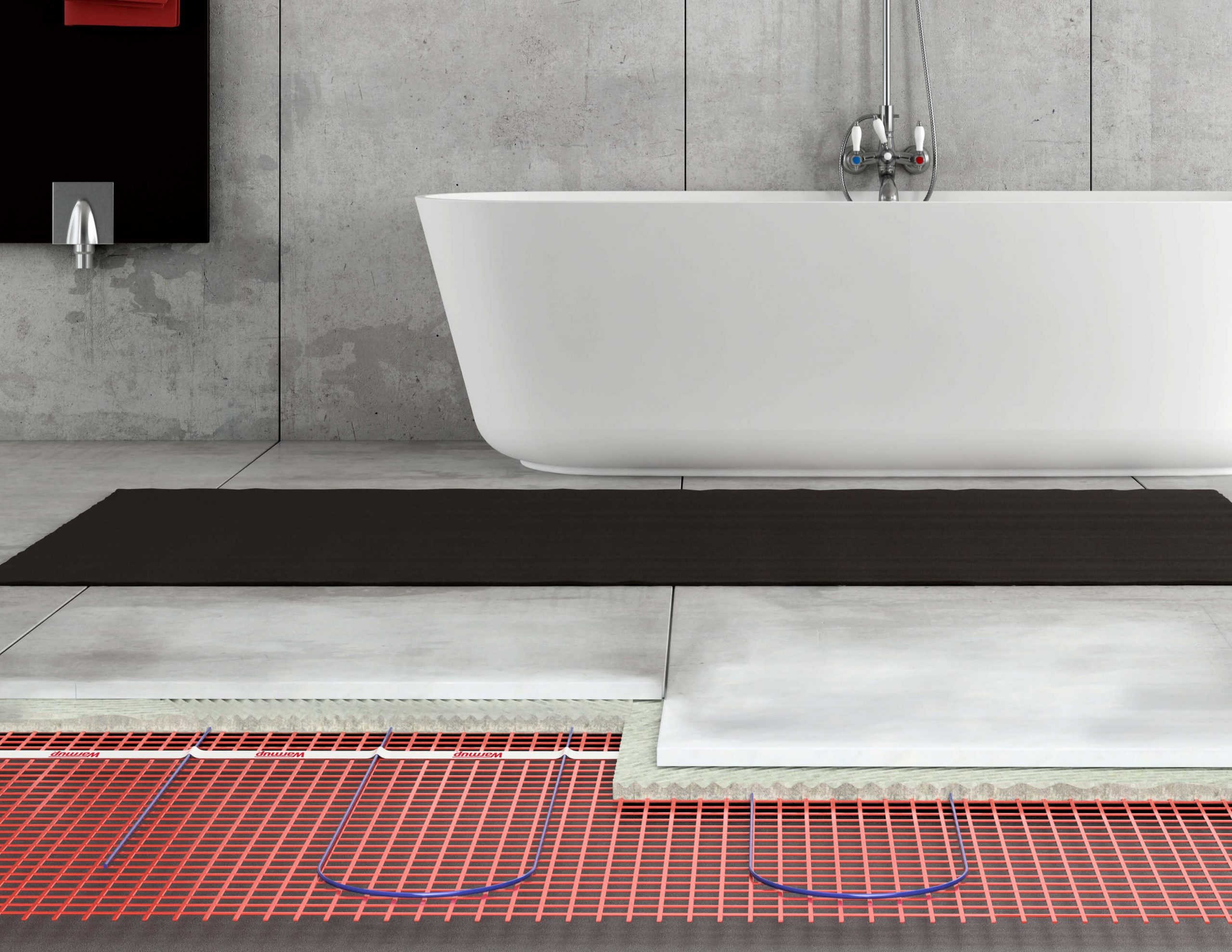It may be a chilly, dark morning, but you know you have to start your day. Of course, it’s a painful feeling to leave your warm bed and walk on a cold floor. It seems all that awaits you is a cold floor from bedroom to kitchen to bathroom to everywhere. But when you have a radiant floor heating system installed in your house, it becomes easier for you to start your day.
Why install a low-voltage floor heating system in your home?
Heat rises and radiates; that is a fact. People usually leave their beds in the morning to go to the bathroom, then kitchen, and then everywhere else in the home. We spend almost all the time walking on the floor and doing our work. So having a warm floor is more important than heating the unused space near the ceiling which is what forced-air heating usually does.
The working mechanism of a low-voltage floor heating system is completely different from a forced-air heating system. The radiant floor heating system uses a floor heating mat woven from electrical cables laid out under the floor surface. It drifts up warm air and keeps your space warmer. If your floor is constructed with a material such as tile or hardwood, its ability to retain heat will maintain the warmth of the room even after you turn the system off.
Is it worth installing a low-voltage floor heating system in the bathroom?
Waking up on a cold and dark morning and leaving your bed to go to the bathroom and get ready for the office feels terrible. Taking a shower with warm water on a cold floor doesn’t feel right. No one ever wants to leave their comfort zone, even in the bathroom. That is why the most ideal place for installing a radiant floor heating system in the whole house is the bathroom. Additionally, a bathroom is typically a small space, so it is very budget friendly to install a low-voltage heating system in the bathroom.
Is installing a radiant floor heating system cost-effective?
A low-voltage floor heating system is easy to install, making it cost effective. Plus, it does not require any kind of maintenance once installed.
Much like a forced-air heating system, you can set your thermostat to run the system by ambient room temperature or on a timer to maintain the desired temperature during peak hours of use. This add efficiency and helps reduce heating costs . In contrast with the forced-air system, the low-voltage floor heating system runs more economically. They are energy efficient, distribute the heat evenly, and retain it for longer. As heat rises from the floor mixes with the cooler air above you will get a more evenly heated and comfortable space.
Energy savings can depend on the climate where you live, but on average, low-voltage floor heating systems can save up to 30% of energy usage. Operating in a cold bathroom can use less energy than the lighting used to keep it lit.
Does a low-voltage floor heating system heat the room too?
Radiant floor heating systems not only warm the floor, but also can be used to heat the room.
A forced-air heating system relies on air circulation to keep the room heated. That is why you will not find any uniformity in the warmth of the air in the space. In a room where forced air heating systems are used, places near the vent or up high are warmer than the places that are away from the vent or near the floor.
When it comes to the radiant floor heating system, the heat source is at the ground and it spreads evenly throughout the whole room.
However, some factors affect the performance of low-voltage flow heating systems:
- If your house is located in a place where the climate is cold, you should have a fairly airtight room so that the radiant floor heating system can operate efficiently.
- If your space is not properly insulated, a low-voltage floor heating system will not be able to perform as efficiently due to heat loss.
- If your room is constructed using cement, the floor heating system it is a good idea to create a thermal barrier from the cement so it won’t absorb any of the heat.
While areas such as a kitchens or bathrooms are the most popular places to use them, Low-voltage floor heating systems are ideal for any area where you want to efficiently add heat without needing to tear out walls to duct in an hvac system. It has a very small footprint and works very well.
If you’re constructing or remodeling your bathroom, adjust your budget to include a low voltage floor heating system. The cost of installing a low-voltage floor heating system is minimal compared to your comfort level..




























